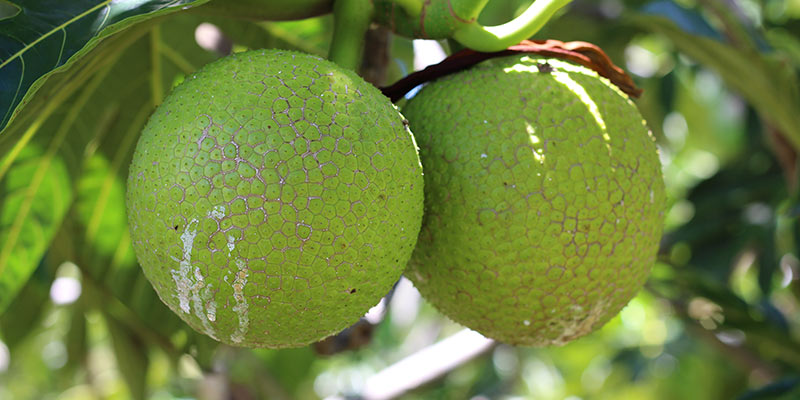- This topic is empty.
- AuthorPosts
- Febuari 9, 2025 at 11:28 um #560486

Breadfruit and breadnut trees are versatile tropical species that offer significant agricultural potential due to their high nutritional value and various uses.
These trees, while native to the Pacific Islands, have been widely cultivated in tropical and subtropical climates around the world.
Establishing and managing a successful orchard of breadfruit and breadnut requires specific knowledge of soil, irrigation, pest management, and proper care to ensure healthy tree growth and bountiful yields.
This article explores the essential steps involved in orchard establishment and the best practices for maintaining breadfruit and breadnut trees.
1. Site Selection And Land Preparation
Choosing the right location is critical when establishing a breadfruit and breadnut orchard. These trees thrive in tropical and subtropical climates, preferring consistent rainfall and temperatures between 70°F to 95°F. They require well-drained, fertile soil with a slightly acidic pH (around 5.5 to 7.5).
Ideal sites should be protected from strong winds and have access to adequate sunlight for at least six hours a day. Before planting, it’s important to prepare the land by clearing the area of weeds, rocks, and debris.
Soil testing can guide proper amendments to ensure the soil has the right balance of nutrients for tree growth. Adding organic compost or well-rotted manure helps enhance soil fertility and structure. Additionally, incorporating organic matter into the soil improves moisture retention, essential for the young trees.
2. Planting Techniques For Breadfruit And Breadnut Trees
Once the land is prepared, planting breadfruit and breadnut trees should be done with care to ensure strong growth. The trees are usually propagated from seeds or vegetative methods like grafting or air-layering. When planting, it is important to space the trees adequately to avoid overcrowding.
Typically, breadfruit and breadnut trees should be spaced at least 25 to 30 feet apart, allowing them room to grow to their full size, which can be up to 85 feet tall. The planting holes should be dug large enough to accommodate the root ball, with the top of the root ball level with the surrounding soil.
After planting, water the trees thoroughly and apply mulch around the base to conserve moisture, suppress weeds, and regulate soil temperature. Regular watering is critical, especially during the early stages of growth.
3. Irrigation And Fertilization Practices
Breadfruit and breadnut trees require consistent watering, particularly in dry periods, to thrive. While they are tolerant of various soil types, it is essential to provide regular irrigation, particularly during the dry season or when rainfall is insufficient.
Drip irrigation is an effective method to provide moisture directly to the roots, minimizing water wastage. However, it is important to avoid waterlogging, as these trees are susceptible to root rot in poorly drained soils.
Fertilization is equally important in ensuring the health and productivity of the trees. Applying balanced fertilizers containing essential nutrients such as nitrogen, phosphorus, and potassium supports healthy growth. Organic amendments, such as compost or well-rotted manure, can also be used to enrich the soil and improve fertility.
Regular soil testing helps to monitor nutrient levels and determine any deficiencies that need to be addressed. Additionally, micronutrients like zinc and magnesium may be necessary for optimal growth and fruit production.
4. Pest And Disease Control
Pests and diseases can pose significant threats to the health of breadfruit and breadnut trees. Common pests include aphids, mealybugs, and scale insects, which can damage the leaves and fruit.
Fungal diseases, such as powdery mildew and root rot, are also issues that can reduce tree productivity. Integrated pest management (IPM) practices are recommended to control pest populations while minimizing the use of harmful chemicals.
IPM involves monitoring pest activity, encouraging natural predators, and using organic pesticides when necessary.
Regular pruning can help remove infected or damaged branches, improving air circulation and reducing the chances of disease.
To prevent root rot, it is important to ensure proper drainage and avoid over-irrigating the orchard. Ensuring that trees are not stressed by environmental factors such as drought or poor soil can also make them more resistant to pest and disease attacks.
5. Orchard Maintenance And Harvesting
Proper maintenance is essential for the long-term success of a breadfruit and breadnut orchard. Regularly check the trees for signs of pests, diseases, or nutrient deficiencies. Pruning is necessary to remove dead or diseased wood, allowing for better airflow and light penetration, which promotes healthy growth.
Mulching around the base of the trees helps maintain moisture levels and suppress weeds. Additionally, maintaining a regular fertilization schedule ensures that the trees continue to receive the nutrients needed for optimal growth.
Harvesting breadfruit and breadnut requires careful timing. Breadfruit is harvested when it reaches full size and its skin begins to change color, whereas breadnut is typically harvested when the fruit naturally falls to the ground.
The fruits should be handled gently to avoid bruising or damage. After harvesting, breadfruit can be used in a variety of ways, including as fresh food, dried, or processed into flour.
Establishing and managing a successful breadfruit and breadnut orchard involves careful planning, proper site selection, and ongoing care. These trees offer valuable economic and nutritional benefits, especially in tropical and subtropical regions.
By following best practices in planting, irrigation, pest control, and regular maintenance, orchard owners can ensure a healthy, productive orchard that continues to yield high-quality fruit. With increasing demand for sustainable and nutritious crops, breadfruit and breadnut have the potential to play a significant role in global food security and agricultural sustainability.
Read Also: Advantages of Organic Breadfruit Farming for Sustainable Agriculture
- AuthorPosts
- You must be logged in to reply to this topic.





